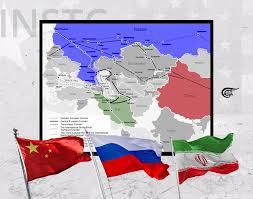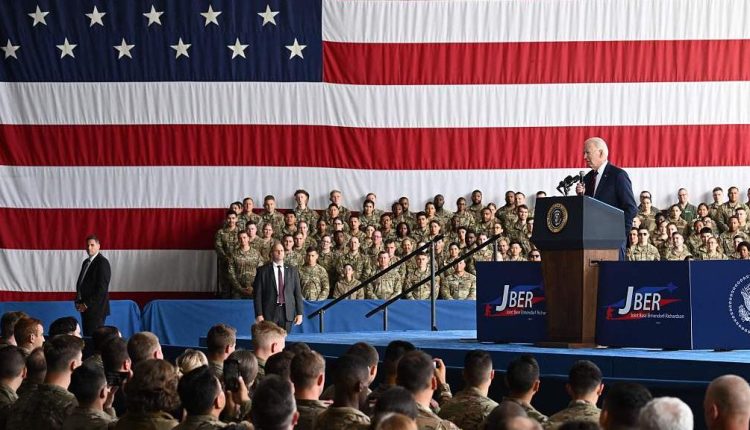US WORLD HEGEMONY; THE DANGEROUS GAMBLE…

*Writer and Researcher DR. PIERRE A. SARKIS .
Hegemony is what most powers, empires and nations vied for since old times. It is the desire and will to conquer and rule not only one’s own people, land and territory, but also the land and territory of others. It takes on different characteristics, shapes and forms,such as, cultural, political, economic and social. Examples are numerous and spanned over a long period of time with Greeks, Persians, Romans, Mongols,Russians, British, Soviets and Americans to name a few.
In recent modern history, it was the Great Game for world hegemony between the British and Russian Empires in the 18th and 19th centuries. Some empires go far in seeking world hegemony by expanding towards other empires, conquering land in its path, as happened with the British Empire conquering India, by means of the British East India Company, bringing it into direct conflict with the people of Central Asia, as had happened in the several British-Afghani Wars of the 1800’s, to name a few. In doing so, the British were at the doorsteps of Russia, ushering in the dawn of the Great Game. At stake was the control of the Central Asian territories, the fur trade and the ancient silk road. It was natural for the different Russian Tsars to feel threatened by an empire, Great Britain, which travelled thousands of miles outside its own territory to try and encircle Russia and prevent it from expanding. In doing so, the many different populations of Central Asia came under constant attack from both Russia and Britain. However, and according to the British, it was always the Russians whose own borders were threatened and encircled by British presence, who were the real threat to world peace.
Fast forward to the end of World War II in 1945,when the world got stuck in the Cold War between the US and the Soviet Union, and was divided into a system of blocs and alliances. US-led NATO countries (North Atlantic Treaty Organization) featuring most Western European countries, faced the Soviet led Warsaw Pactfeaturing most Eastern European communist countries. The Soviet Union as a European country had more legitimacy in being in Europe than did the US, who was oceans away in the American continent. Yet, as in the Great Game, and according to the US and NATO allies,it was the Soviet Union which threatened world peace. Then eventually, the US started to establish military alliances around, or in the periphery of Soviet borders in order to contain the spread of Communism.
Following NATO came the US-led CENTO Alliance (Central Treaty Organization) better known as the Baghdad Pact including Iran, Iraq, Pakistan, Turkey and the United Kingdom, to encircle the Southern borders and fringes of the Soviet Union, because again, the Soviets were branded a real threat to world peace. Along came a new US-led alliance, SEATO (Southeast Asia Treaty Organization) including the US, France, the UK, New Zealand, Thailand, the Philippines, Australiaand Pakistan. The purpose was to prevent Communism from gaining ground in the region. According to the US, the threat to world peace and stability this time around came not only from the Soviet Union but Chinaas well, which had turned communist under Chairman Mao Tse Tung. Never did the US at any time consider itself the real threat to world security and stability.

In its drive for world hegemony, the US has imposed itself on different areas and different countriesin the world in order to extend its influence and play a major role in dominating world affairs. The present major crisis occurring because of US hegemonism is in the Ukraine. The US is stationing US, as well as, NATO troops in the Ukraine and around the borders of Russia, to prevent what it believes is an imminent Russian invasion of the Ukraine. In the process, it has ignored Russian fears of US-NATO encirclement by stationing troops around Russia, and also, by the US’s call on old communist Eastern European countries, such as Romania and Poland, to join NATO. Russian President Vladimir Putin has made it clear that such acts were a major threat to Russian national security and would not be tolerated. The US and NATO’s response was as usual, that Russia is a threat to world peace and stability. In this respect, the demands presented to US and NATO by the Kremlin concerning Russian fears and suspicion of US-NATO intentions was totally disregarded, raising the tensions in the region to an all-time high since World War II.
Another major crisis occurring because of US hegemonism is in Iran. In its efforts to prevent any power from threatening its allies, mainly most Arab Gulf countries and Israel, the US has established several military bases inside the Persian Gulf on the borders of Iran, and is putting pressure on the latter to re-sign a new nuclear deal on US terms, the old deal having beencancelled by former US President Donald Trump, something Iran refuses to do. While there are several nuclear powers in the world possessing nuclear weapons, including Israel in that region, it is not allowed for Iran to produce nuclear energy except for peaceful purposes. The message is clear, “we can have it but you can’t” which is the epitome of hegemonism. In this context, and as is the case with Russia, Iran and not the US becomes a threat to world peace and stability.
In other parts of the world, US hegemonism is alsomanifest. The US now has several warship groups roaming the Pacific Ocean, checking Chinese activities in areas in the proximity of Chinese borders and the islands of Paracel and Spratley in the South China Sea,claimed by China. The US considers Chinese claims to be baseless, and calls on allies such as Taiwan, Japan, New Zealand and Australia to play a role in denying Chinese claims. Especially crucial is the issue of Taiwan,which is Chinese territory that separated from the mainland under Chinese General Chang Kai-shek in his war against Chairman Mao’s communist China. Taiwan has been a US ally bringing relations with China to dangerous levels, as the Chinese insist that Taiwan is Chinese land and should return to the authority of mainland China, the mother country. Naturally, China’s claims on Taiwan, the islands and the waterways are considered by the US a threat to world peace and stability.
It is clear that US hegemony over the world is not only expanding, but also threatening world peace and stability. US forces and military power surround and encircle countries in their own geographical borders and locations in the world. There are no Chinese or Russian military vessels roaming the Pacific and Atlantic Oceans close to US borders, nor did the two powers station troops in Mexico and Canada on US borders. The threat is clear, and is an attempt to dominate world politics and affairs at a very high cost to world peace.
At the end, this is a very clear and dangerous gamble the US and President Joe Biden are embarking on. What would be the US reaction if either Russia or China station troops in Cuba, few hundred miles from the state of Florida? Didn’t the US and the Soviet Union come to the brink of nuclear war during the 1962 Cuban Missile Crisis, specifically because the SovietUnion stationed troops and missiles in Cuba? Prior tothat, the US had placed missiles on its allies’ territoriessurrounding the Soviet Union, such as Turkey, and sending missiles to Cuba was precisely the Sovietreaction to US encirclement of the Soviet Union. Again,the theme is clearly “we can do it but you can’t.” Lessons from history should be learned because history does not forgive, especially when the stakes are very high and the gamble is an extremely dangerous one.
Pierre A. Sarkis
*Specialist in Russian Area Studies

